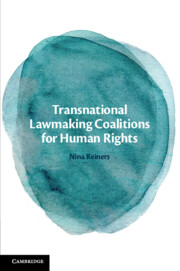Book contents
- Transnational Lawmaking Coalitions for Human Rights
- Transnational Lawmaking Coalitions for Human Rights
- Copyright page
- Dedication
- Contents
- Figures
- Tables
- Acknowledgments
- Abbreviations
- 1 Introduction
- 2 Human Rights Treaty Interpretation
- 3 Transnational Lawmaking Coalitions
- 4 How Water Became a Human Right
- 5 Interpretation across Treaty Bodies
- 6 Lawmaking without Governments?
- 7 Conclusion
- Book part
- Bibliography
- Index
7 - Conclusion
Published online by Cambridge University Press: 25 November 2021
- Transnational Lawmaking Coalitions for Human Rights
- Transnational Lawmaking Coalitions for Human Rights
- Copyright page
- Dedication
- Contents
- Figures
- Tables
- Acknowledgments
- Abbreviations
- 1 Introduction
- 2 Human Rights Treaty Interpretation
- 3 Transnational Lawmaking Coalitions
- 4 How Water Became a Human Right
- 5 Interpretation across Treaty Bodies
- 6 Lawmaking without Governments?
- 7 Conclusion
- Book part
- Bibliography
- Index
Summary
The concluding chapter summarizes the key insights vis-à-vis the TLC concept – how TLCs form, who they involve, and all other meaningful empirical points about them to know, for example, what makes them legitimate and effective. It discusses how the book’s findings contribute to wider debates in global governance and highlights the concept’s contribution to different strands of literature in international relations and international law, discusses the concept’s generalizability beyond the human rights regime, and gives incentives for future research.
- Type
- Chapter
- Information
- Transnational Lawmaking Coalitions for Human Rights , pp. 131 - 145Publisher: Cambridge University PressPrint publication year: 2021

